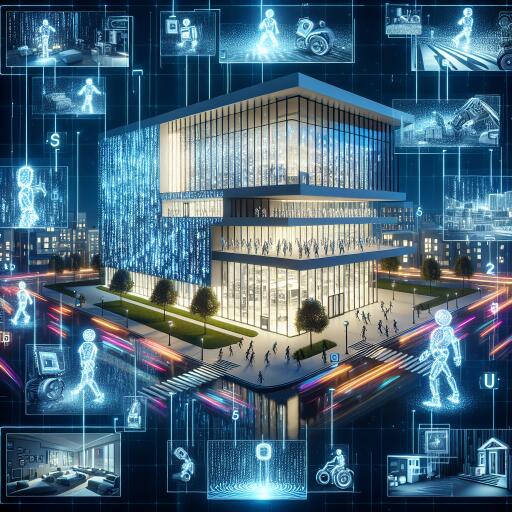Revolutionizing Robotics Training with AI: The University of Washington’s Groundbreaking Approach
Training robots to operate in complex, real-world environments has long been a challenge in the field of robotics. Traditionally, robot training requires extensive data collection, which is both costly and limited by the practicalities of deploying robots in diverse settings. However, researchers from the University of Washington are pioneering methods to overcome these hurdles through innovative AI systems. These systems leverage photos and videos to simulate real environments, offering a promising new pathway to train robots more efficiently and cost-effectively.
The University of Washington’s research teams have recently introduced two breakthrough studies that could significantly reduce the barriers to robot training. Utilizing everyday technology, such as smartphones and internet-sourced images, these systems create detailed simulations of physical spaces, allowing robots to learn and adapt to their designated tasks without the need for real-world trial and error.
RialTo: From Videos to Virtual Learning Environments
The first study introduces RialTo, a system designed to quickly digitize real-world environments using video recordings captured with a smartphone. Users can scan a room or space, capturing the geometric details and functional components (like how to open a drawer). RialTo processes this information to construct a digital twin of the environment, complete with interactive elements. Robots can then navigate this virtual space, practicing tasks repeatedly with varying conditions to master their functionalities. This approach not only improves the robot’s performance but also minimizes the potential for damage and injuries in physical trials.
URDFormer: Harnessing the Power of Internet Images for Simulation
In the second study, the focus shifts to URDFormer, a system that leverages existing internet images to create detailed simulations of real-world environments. By analyzing photos of various settings, URDFormer can rapidly generate realistic 3D simulations where robots can be trained. This process drastically expands the diversity of environments available for robot training, from countless variations of kitchens to other uniquely configured spaces, enabling robots to adapt to a broader spectrum of real-world scenarios.
Presented at the Robotics Science and Systems conference in Delft, Netherlands, these studies underline the significant implications of using AI to transition from physical reality to simulation-based training. Abhishek Gupta, assistant professor at the UW’s Paul G. Allen School of Computer Science & Engineering and a co-senior author of both studies, emphasized the potential of these systems to democratize robotic technology. By simplifying the training process, robots could soon become accessible and functional in more personalized and diverse settings, like individual homes.
While robots have been effectively employed in controlled environments such as factory assembly lines, challenges persist in more dynamic settings, such as residential spaces. The unique and evolving nature of household environments presents a significant obstacle to traditional robot training methods. However, the applications of AI in robotic training, as demonstrated by the RialTo and URDFormer studies, offer promising solutions to these challenges.
Both systems presented by the University of Washington researchers have their unique strengths and potential applications. RialTo’s accuracy in replicating specific environments allows for precise training tailored to individual spaces. Conversely, URDFormer excels in providing a broad exposure to a variety of settings, which is invaluable for the preliminary training of robots before their deployment in specific locations.
As the research progresses, the teams aim to refine these systems further, enhancing their effectiveness and exploring the integration of real-world data to complement simulated training environments. The goal is to ensure that robots can operate safely and efficiently in a wide range of physical spaces, opening new possibilities for robotic assistance in everyday life.
The promise shown by these developments from the University of Washington heralds a new era in robotics. Through the innovative use of AI-powered simulations, the future of robots in our homes and workplaces is not just becoming more feasible but also closer than ever.









